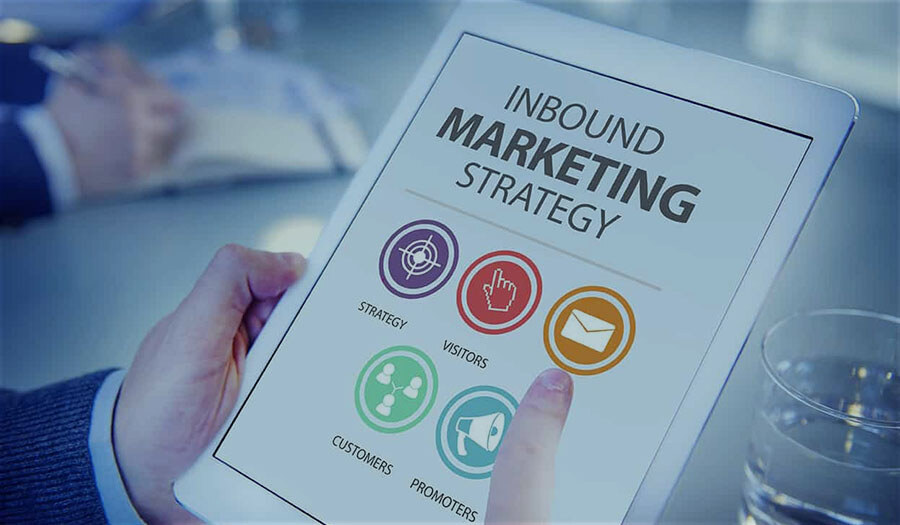How Maximize Your Lead Conversions
Every step in the Inbound Methodology requires a consistent alignment between the customer and the stage in the buyer’s journey he or she is in....
By Role
By Industry
By Target Customer
What We Offer
We drive business growth by improving operational efficiency through process optimization, smart automation, and cost control. Our approach boosts productivity, reduces expenses, and increases profitability with scalable, sustainable solutions
Customer Experience
We design memorable, customer-centered experiences that drive loyalty, enhance support, and optimize every stage of the journey. From maturity frameworks and experience maps to loyalty programs, service design, and feedback analysis, we help brands deeply connect with users and grow sustainably.
Marketing & Sales
We drive marketing and sales strategies that combine technology, creativity, and analytics to accelerate growth. From value proposition design and AI-driven automation to inbound, ABM, and sales enablement strategies, we help businesses attract, convert, and retain customers effectively and profitably.
Pricing & Revenue
We optimize pricing and revenue through data-driven strategies and integrated planning. From profitability modeling and margin analysis to demand management and sales forecasting, we help maximize financial performance and business competitiveness.
Digital Transformation
We accelerate digital transformation by aligning strategy, processes and technology. From operating model definition and intelligent automation to CRM implementation, artificial intelligence and digital channels, we help organizations adapt, scale and lead in changing and competitive environments.
Operational Efficiency
We enhance operational efficiency through process optimization, intelligent automation, and cost control. From cost reduction strategies and process redesign to RPA and value analysis, we help businesses boost productivity, agility, and sustainable profitability.
Customer Experience
Marketing & Sales
Pricing & Revenue
Digital Transformation
Operational Efficiency
As the digital world continually evolves, so must businesses to stay competitive. Traditional marketing efforts such as print and broadcast still play an important part for companies, especially the bigger ones, nonetheless, marketing managers around the world now understand the urgency to master the most effective marketing effort in the new media age: Inbound Marketing.
Inbound marketing is an approach that focuses on reaching out to the customers through targeted, quality content to create long-lasting relationships between them and your business. Inbound efforts aim to attract specific segments of possible clients instead of bombarding the general public with unnecessary and disruptive advertising.
The Inbound Methodology: The Funnel and the Buyer’s Journey
The Inbound philosophy is understood by many as inbound marketing funnel, through which marketers guide possible clients with the ultimate goal of converting them into actual customers. You want to attract visitors to enter the top of your funnel. Then, engage with them through more personalized content to turn them into leads (possible clients). When a possible client begins to interact with your content, meaning he/she fills-out your forms in your landing pages or clicks on your CTAs, he/she become MQL (Marketing Quality Leads) and then, once your marketing team believes that that lead is a strong prospect, ready for a possible sale, he/she becomes a SQL (Sales Quality Lead). After that, the customer reaches the bottom of the funnel and your marketing team should make efforts to convert him/her into a client. These final efforts are called BoFu (Bottom of the Funnel) methods, which are more personalized and where one-on-one interaction such as consultations or free trials are often offered.
The inbound marketing funnel must be strongly linked and aligned with your customer’s buyer’s journey. This is simply where your customer is in the purchasing process. Is your possible customer just beginning to discover you? This is the awareness stage. The prospect is visiting your webpage and getting to know what you have to offer. This step in the buyer's journey should be aligned, in terms of content and all of your marketing strategies, with the top of the funnel. Next comes consideration, which means the customer is interested in you and is thinking about buying. They are MQLs and SQLs. Finally, the decision stage in your buyer's journey is where the customer is converting to a customer. He/she is likely to have had some personal contact with your company and is ready to make a purchase. This step is the bottom of the funnel.
See HubSpot’s diagram of the buyer’s journey aligned to the funnel below.
<<DOWNLOAD INBOUND MARKETING ASSESSMENT TOOL>>

From the Funnel to Hubspot's Flywheel
A new analogy has come to light with the purpose of complementing and helping marketers and sales executives better understand the inbound methodology. HubSpot proposes the flywheel is composed of an attract, an engage and a delight element, and it explains inbound not as a process where people go in and then come out, but as a continuum, where current customers have an effect on new visitors. Attracting consists of creating interesting quality content to hook the right people. When engaging, you should provide your possible customer with knowledgeable, educating content with the purpose of aiding them with their daily challenges and offer possible solutions. Consumers look for ways to make their daily tasks easier, so show them that what you offer can help them do that. The next step is crucial to keep your flywheel turning and not lose momentum. You must delight your customers, and you do this by exceeding their expectations. Provide amazing customer service, make sure they are satisfied with their product or service in a way that incites them to be advocates of your business. They are the most important asset because customer reviews and word of mouth has great influence over new prospects, and that is precisely why the delighting stage circles back to the attract stage.

The Flywheel is an addition to the funnel. Think of it as if there was a small flywheel throughout every step of the funnel.
By implementing inbound marketing to the core of your marketing, you will have great power over your results and will likely see a significant increase in the efficiency and success of your marketing strategies. Not sure how to begin? Contact us.

Every step in the Inbound Methodology requires a consistent alignment between the customer and the stage in the buyer’s journey he or she is in....

Social media has become a critical medium for key contact with our prospects and potential customers, this contact is formed by actively researching...

Today, we all have access to social networks, these digital platforms allow us to be connected with other people and even form large communities with...